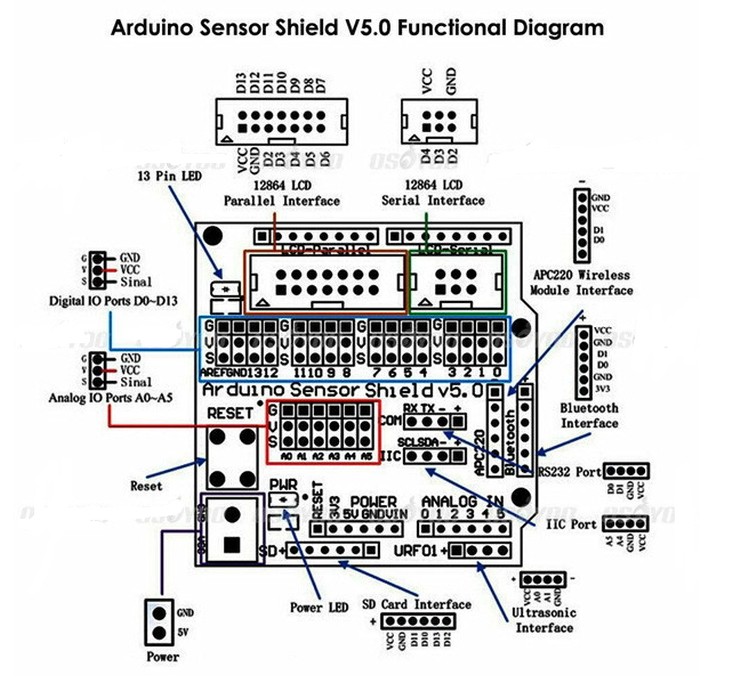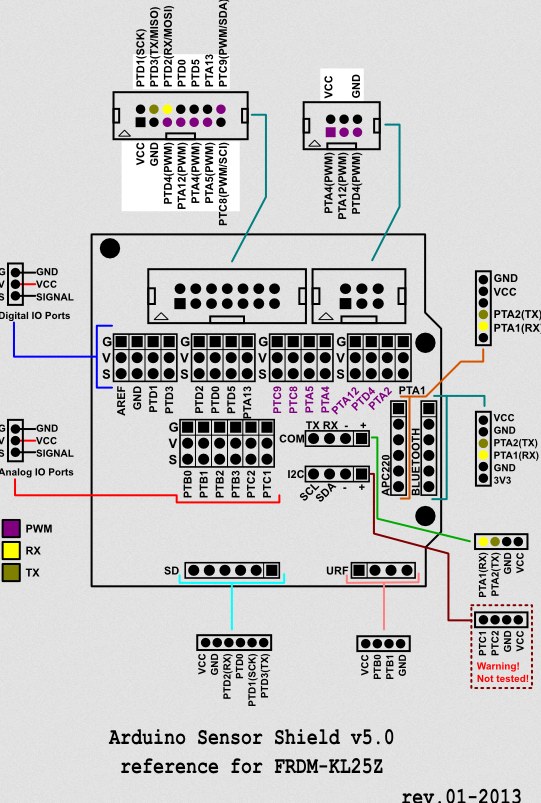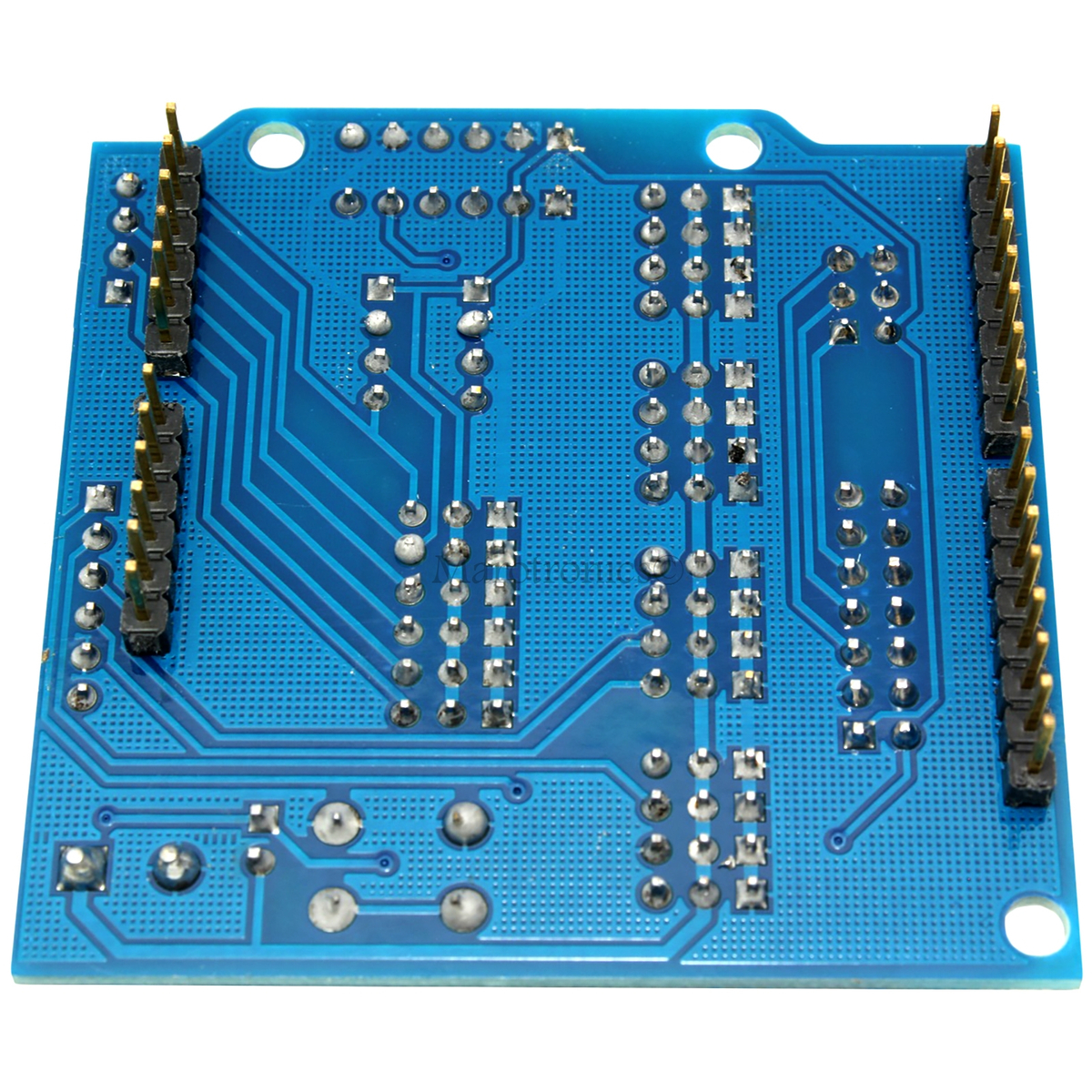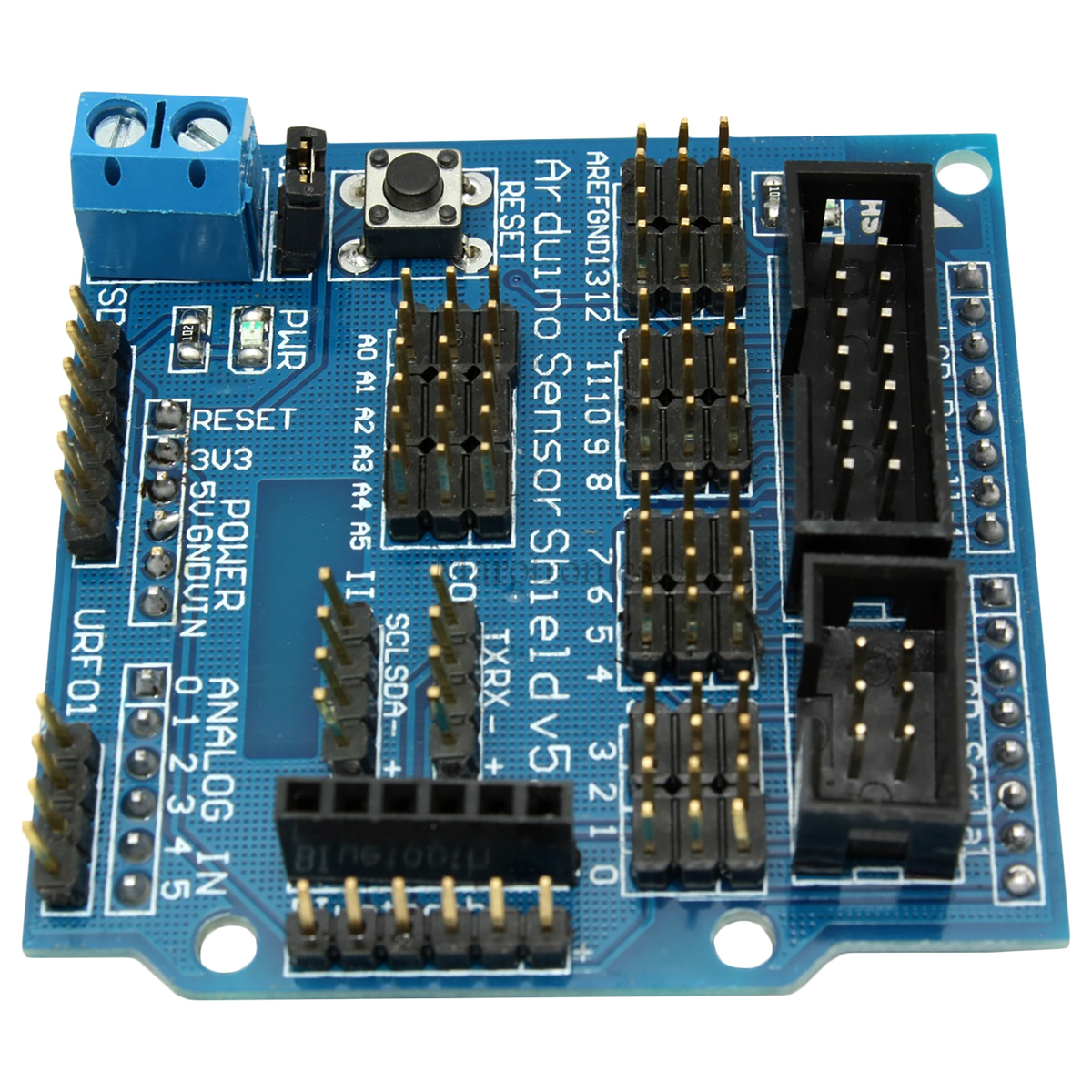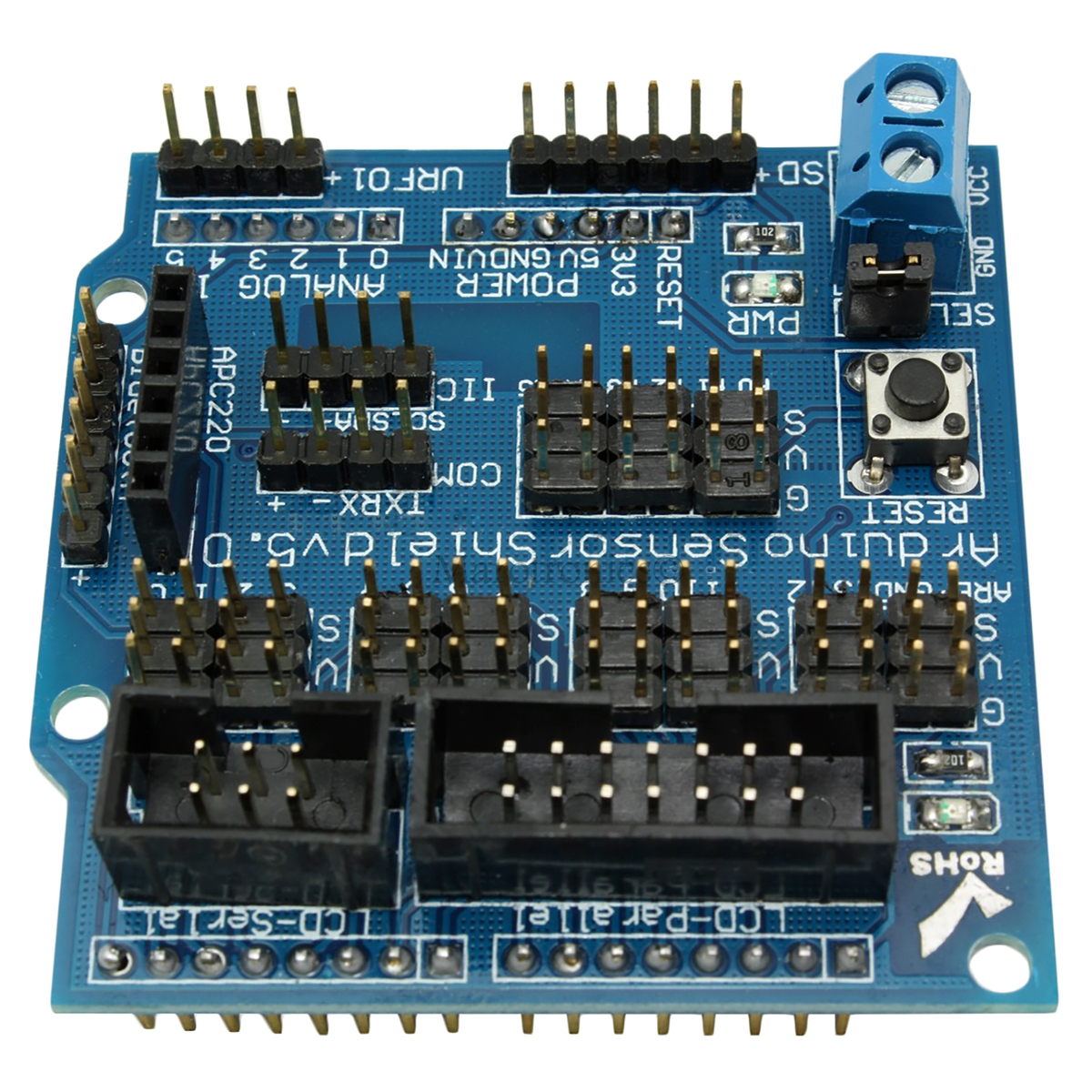Sensor Shield V5.0 für Arduino Uno MEGA
ID: 27 Kategorie: Shields
Menge: 0 Position:
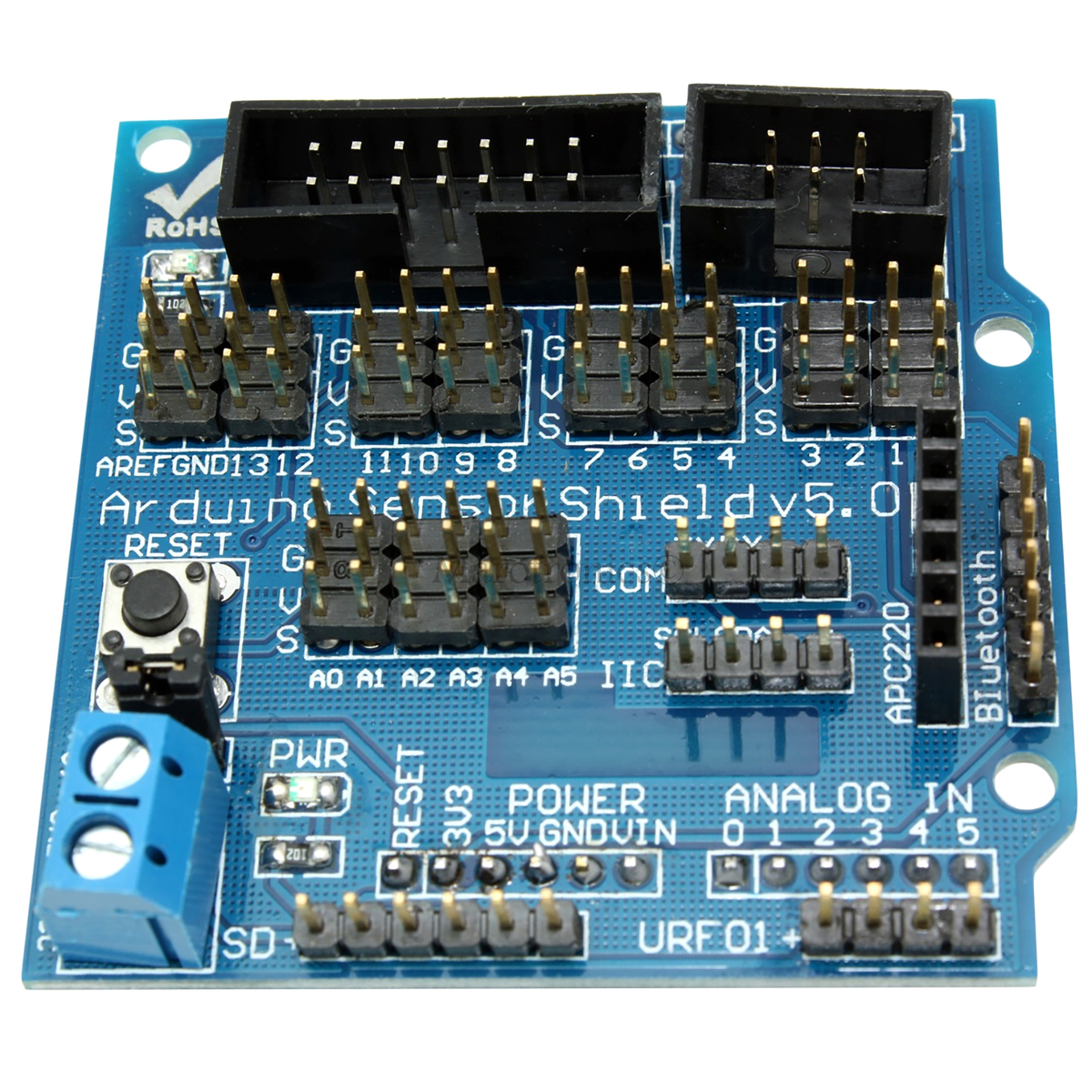
Das Sensor Shield V5.0 passt auf das MEGA und Uno Board. Sie können einfach Module und Sensoren anschließen.
Item Description:
- Sensor Shield allows you to connect to various modules like sensors, servos, relays, buttons, potentiometers.
- Support I2C interface.
- Support 32 road Servo Motor Drive Shield interface.
- Support bluetooth module communication interface.
- Support SD card module communication interface.
- Size:57mm x 58mm
Description
Arduino Sensor Shield is a low-cost board that allows you to connect a range of sensors to your Arduino using easy-to-attach jumper cables.
It’s a simple board with no electronics on it other than a couple of resistors and an LED.
Its main role is to supply those header pins to make it easier to attach external devices like our servo motors.
Features:
• The Arduino Sensor Shield V5.0 allows plug and play connection to various modules like sensors, servos, relays, buttons, potentiometers and more
• Suitable for Arduino UNO and Mega Boards
• IIC interface
• Bluetooth module communication interface
• SD card module communication interface
• APC220 wireless RF module communication interface
• RB URF v1.1 ultrasonic sensors interface
• 128 x 64 LCD parallel interface
• 32 servo controller interface
You can easily connect with usual analog sensors by using this expansion board, such as temperature sensor.
Those 3-way male pins allow you to connect servo motors.
Everything is plug and play, and it’s designed to be Arduino UNO compatible. So all you need to do is to read the data from the sensors
and output PWM to drive the servos by program in arduino.
This is the latest version of sensor shield in the market. The major improvement over its predecessor is the power source.
This version provides an external power connector so you don’t need to worry about overloading the Arduino microcontroller while
driving too many sensors and actuators.
If you remove the pin connector next to the power input, you can power it externally. You shouldn’t power it with more then 5v or you can damage the arduino underneath.

